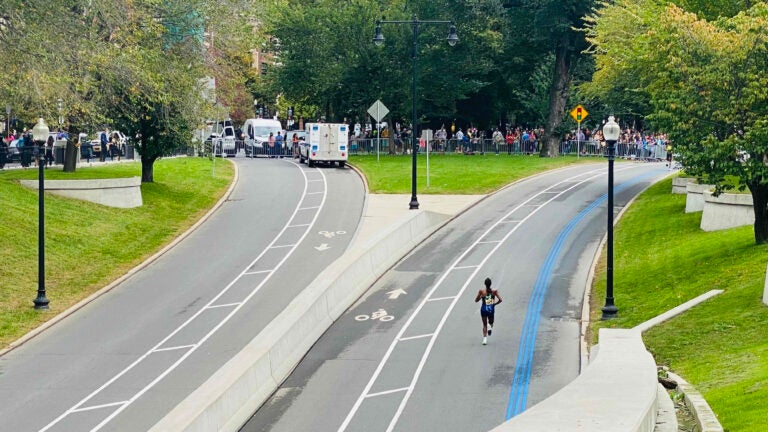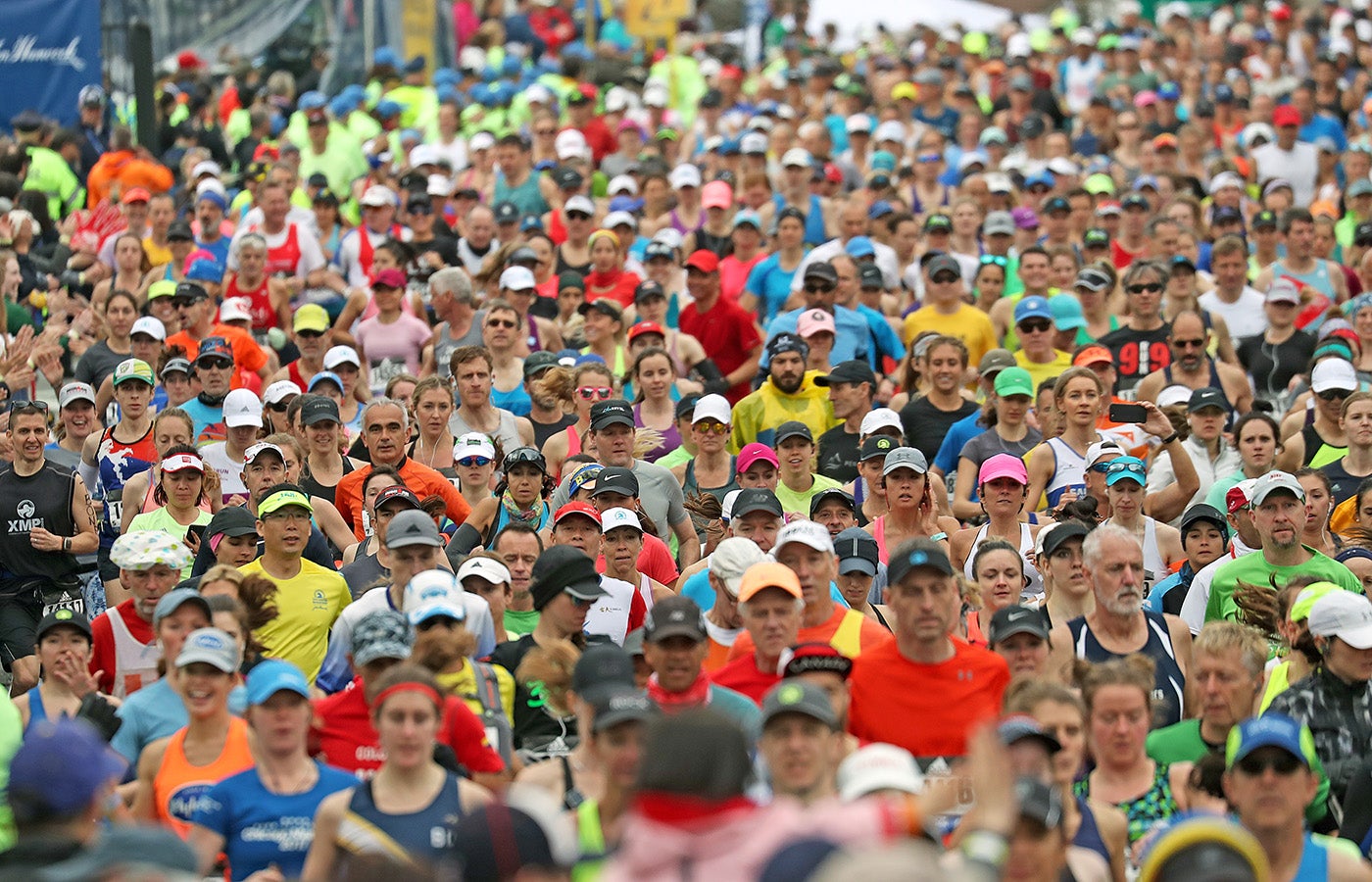Wickedpedia
“Under normal circumstances it’s not a difficult hill, but in the last half mile of Boston, it’s a mountain.”

The Boston Marathon’s grueling hills can be punishing for even the most seasoned runners — just ask decorated marathoner Eliud Kipchoge, who faltered on the Newton hills in last year’s race.
And while Heartbreak Hill usually gets all the glory, many marathoners say there’s another incline equally worthy of contempt and condemnation: The dip underneath Massachusetts Avenue, within a mile of the finish line.
“Sure, Heartbreak Hill isn’t easy, but personally where my heart broke was the tiny hill in the last half mile of the course — where you come up from the underpass of Mass Ave. and turn right on Hereford,” runner Kelsey Taylor told Boston.com ahead of the 2023 marathon.
In that moment, Taylor said, “I realized what a cruel joke it is to have the runners cross underneath Mass Ave., where there are no spectators and a hill, instead of crossing over the flat top.”
As cruel as it may seem to send aching runners plodding uphill so close to the finish line, this quirky course feature also serves a strategic purpose. Here’s what to know.
When did the Boston Marathon course change?
For years, the Boston Marathon ran across Mass. Ave. as runners headed into the Back Bay. That all changed in 2006, when marathon organizers rerouted the course under Mass. Ave. “in an effort to provide vehicular relief” to the neighborhood, longtime Boston Marathon race director Dave McGillivray announced at the time.
In other words, blame Boston traffic.
“This will have a significant impact on relieving the North and South traffic gridlock in the Back Bay that is normally created by the race,” McGillivray explained in a 2006 post on the website for his race management organization, DMSE Sports.
“Bottom line is that the second half of the race field is slower today than years ago, thus tying up city streets much longer and as such we need to respond to city requests to offer some relief,” he added.
It was a relatively minor change, but the running world took note: “Even the mighty Boston Marathon … must bow in a few areas to municipal authorities who try to balance the economic boom of the runners with the vitriolic boom of motorists stuck in traffic,” read an April 2006 Road Race Management newsletter.
Is Mass. Ave. a mountain or a molehill?
So, what can marathoners expect from the Mass. Ave. underpass?
For one thing, the dip under Mass. Ave. hovers around sea level, making it the lowest point on the course — a distinction reported by The Boston Globe in 2006 and recently confirmed by marathon organizer the Boston Athletic Association.
“I guess you could say we’ve reached a new low,” McGillivray joked in the 2006 Globe article, predicting that the course change would result in a negligible impact on runners’ times.
According to BAA Director of Race Communications and Media Chris Lotsbom, there’s a 12-foot elevation decrease between miles 25 and 26, which may not seem like a huge difference for a course with a net elevation drop of 459 feet.

McGillivray described the Mass. Ave. incline as “slight” in his 2006 post on the DMSE Sports website, adding, “It is not severe and if runners know this in advance (which they will), they should be able to adjust their stride accordingly and handle this without any degree of difficulty.”
Some marathoners beg to differ.
“Under normal circumstances it’s not a difficult hill, but in the last half mile of Boston, it’s a mountain,” Taylor said.
Other runners who spoke with Boston.com last year noted how difficult it is to stay motivated with the finish line out of sight and no cheering spectators parked under Mass. Ave.
“It’s the only moment in the course where you can’t see or hear fans because you’re surrounded by the cold cement of the underpass,” Lindsay Weigel told Boston.com. “Thankfully, the other side is just roaring with spirit so it’s only a short moment of solitude.”
Newsletter Signup
Stay up to date on all the latest news from Boston.com





